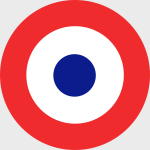Hobby Master HA9609 French Dassault Rafale C Multirole Fighter - 113-HS, Escadron de Chasse 7 Provence, Kandahar, Afghanistan, 2010 (1:72 Scale)
"Obsolete weapons do not deter."
- British Prime Minister Margaret Thatcher
 The Dassault Rafale (literally meaning "gust of wind", and "burst of fire" in a more military sense) is a French twin-engine, canard delta wing, multirole fighter aircraft designed and built by Dassault Aviation. Equipped with a wide range of weapons, the Rafale is intended to perform air supremacy, interdiction, aerial reconnaissance, ground support, in-depth strike, anti-ship strike and nuclear deterrence missions. The Rafale is referred to as an "omnirole" aircraft by Dassault.
The Dassault Rafale (literally meaning "gust of wind", and "burst of fire" in a more military sense) is a French twin-engine, canard delta wing, multirole fighter aircraft designed and built by Dassault Aviation. Equipped with a wide range of weapons, the Rafale is intended to perform air supremacy, interdiction, aerial reconnaissance, ground support, in-depth strike, anti-ship strike and nuclear deterrence missions. The Rafale is referred to as an "omnirole" aircraft by Dassault.
In the late 1970s, the French Air Force and French Navy were seeking to replace and consolidate their current fleets of aircraft. In order to reduce development costs and boost prospective sales, France entered into an arrangement with UK, Germany, Italy and Spain to produce an agile multi-purpose fighter, the Eurofighter Typhoon. Subsequent disagreements over workshare and differing requirements led to France's pursuit of its own development programme. Dassault built a technology demonstrator which first flew in July 1986 as part of an eight-year flight-test programme, paving the way for the go-ahead of the project. The Rafale is distinct from other European fighters of its era in that it is almost entirely built by one country, involving most of France's major defence contractors, such as Dassault, Thales and Safran.
Many of the aircraft's avionics and features, such as direct voice input, the RBE2 AA active electronically scanned array (AESA) radar and the optronique secteur frontal infra-red search and track (IRST) sensor, were domestically developed and produced for the Rafale programme. Originally scheduled to enter service in 1996, the Rafale suffered significant delays due to post-Cold War budget cuts and changes in priorities. The aircraft is available in three main variants: Rafale C single-seat land-based version, Rafale B twin-seat land-based version, and Rafale M single-seat carrier-based version.
Introduced in 2001, the Rafale is being produced for both the French Air Force and for carrier-based operations in the French Navy. The Rafale has been marketed for export to several countries, and was selected for purchase by the Indian Air Force, the Egyptian Air Force, and the Qatar Air Force. The Rafale has been used in combat over Afghanistan, Libya, Mali, Iraq and Syria.
Pictured here is a 1:72 scale replica of a French Dassault Rafale C multirole fighter that was attached to113-HS, Escadron de Chasse 7 Provence, then deployed to Kandahar, Afghanistan, during 2010.
Now in stock!
Dimensions:
Wingspan: 5-3/4-inches
Length: 8-1/4-inches
Release Date: January 2025
Hisotircal Account: "In Support" - Following the 9/11 attacks against the US, France agreed to take responsibility for the Kapisa and Surobi regions, two small and mountainous areas of a critical strategic importance because of their proximity to both Kabul and the Salang highway. The provinces command access to the northern part of Afghanistan from Kabul, but also to Pakistan through Laghman province to the southeast. Because of its geographic importance, the area was already viciously fought over by the mujahedeen and the Soviets during the Soviet invasion of Afghanistan. The French deployed a brigade in the region, under the command of Regional Command-East. However, because France had earlier refused to participate in the provincial reconstruction team system, the division of labor between Europeans and Americans was turned on its head in Kapisa. While most European countries ran their own provincial reconstruction teams, with American troops providing the main battlefield force after the "surge" (see for example Norway in Faryab or the United Kingdom in Helmand), the opposite happened: An American provincial reconstruction team led governance and development operations while French military forces led security operations.
The campaign in Afghanistan was an important driver of transformation in the French armed forces. The French worked as part of a coalition, adapted to battlefield dangers (for example by re-discovering how to deal with improvised explosive devices), and experimented with new organizational structure such as the Groupements Tactiques Interarmes - combined arms, ad-hoc battlegroups composed of companies and sections drawn from different regiments.






